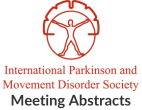Asymmetry of pallidal neuronal activity correlates with head rotation in patients with cervical dystonia
Objective: To find correlation between single unit activity in globus pallidus (GP) and neck turning in patients with cervical dystonia (CD). Background: Asymmetric GP local…Multimodal evoked potential analysis in Woodhouse-Sakati Syndrome
Objective: Investigate Woodhouse-Sakati syndrome through analysis of multimodal evoked potentials at various clinical stages, to assess their possible role as an aid in determining the…Contingent negative variation in patients with cervical dystonia related to sensory tricks
Objective: To evaluate changes in brain potentials related to sensory tricks in cervical dystonia (CD) activity compared to healthy volunteers using EEG Background: Sensory tricks…Is primary writing tremor a form fruste of dystonia?
Objective: To investigate whether primary writing tremor (PWT) and dystonia share a common pathophysiology and clarify if they are different phenomenological expressions of the same…Cervical dystonia – changes in resting state cerebellar connectivity induced by botulinum toxin
Objective: The aim of our study was to compare the connectivity between large-scale resting state networks and the cerebellum before and after treatment initiation. Background:…Disease Modeling of DYT1 Using Patient Induced Pluripotent Stem Cells
Objective: To create a resource of induced pluripotent stem cells (iPSCs) as models for exploring mechanisms of pathogenesis in DYT1 dystonia. Background: DYT1 an autosomal…Can cerebellar dysfunction help differentiate idiopathic from functional cervical dystonia?
Objective: This study investigated cerebellar function in patients with primary cervical dystonia (CD) and patients with presumed functional dystonia, with the intention to both clarify…Optimization of Region of Interest Analysis of the Superior Colliculus for Improved Activation Detection in Cervical Dystonia
Objective: Optimization of Region of Interest (ROI) Analysis of the Superior Colliculus for Improved Activation Detection in Cervical Dystonia Background: Cervical dystonia (CD) is a…Prevalence and Correlates of Anxiety & Depression in Cervical Dystonia
Objective: Our aim was to assess the prevalence and severity of mood disorder in our Cervical Dystonia population attending the botulinum toxin clinic and to…Neuronal responses of pallidal and cerebellar receiving thalamic nuclei to neck exertion in cervical dystonia patients
Objective: The goal of the study was to find differences in spontaneous and neck-related activity of pallidal and cerebellar receiving thalamic nuclei in patients with…
- « Previous Page
- 1
- …
- 10
- 11
- 12
- 13
- 14
- …
- 17
- Next Page »
